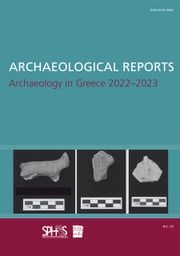Article contents
9 A brief history of the BSA Museum Study Collection
Published online by Cambridge University Press: 09 March 2023
Abstract
The BSA Museum houses a study collection of artefacts donated to the BSA and collected by its members up to the 1960s. The collection provides a valuable resource for teaching and research, enabling scholars to gain first-hand familiarity with objects from a range of material types (including ceramics, metals, stone, terracotta) dating from the Neolithic through to the Late Byzantine period. The collection comprises some 4,000 individual artefacts and over 46,000 sherds of pottery, objects that have been displayed in different parts of the BSA premises over the past 130 years. Of the whole collection, various small sections have been published in the Annual of the BSA. What has been lacking, however, is a narrative about the museum itself: where its objects came from, who studied them, how the collection as a whole has been catalogued and organized. This paper tells that story: from the collection’s humble beginnings, with the first donation of just a few sherds in 1892, through to recently completed digitization and public engagement projects.
- Type
- Archaeology in Greece 2021–2022
- Information
- Copyright
- © The Author(s), 2023. Published by Cambridge University Press on behalf of the Society for the Promotion of Hellenic Studies and the British School at Athens
References
- 1
- Cited by


